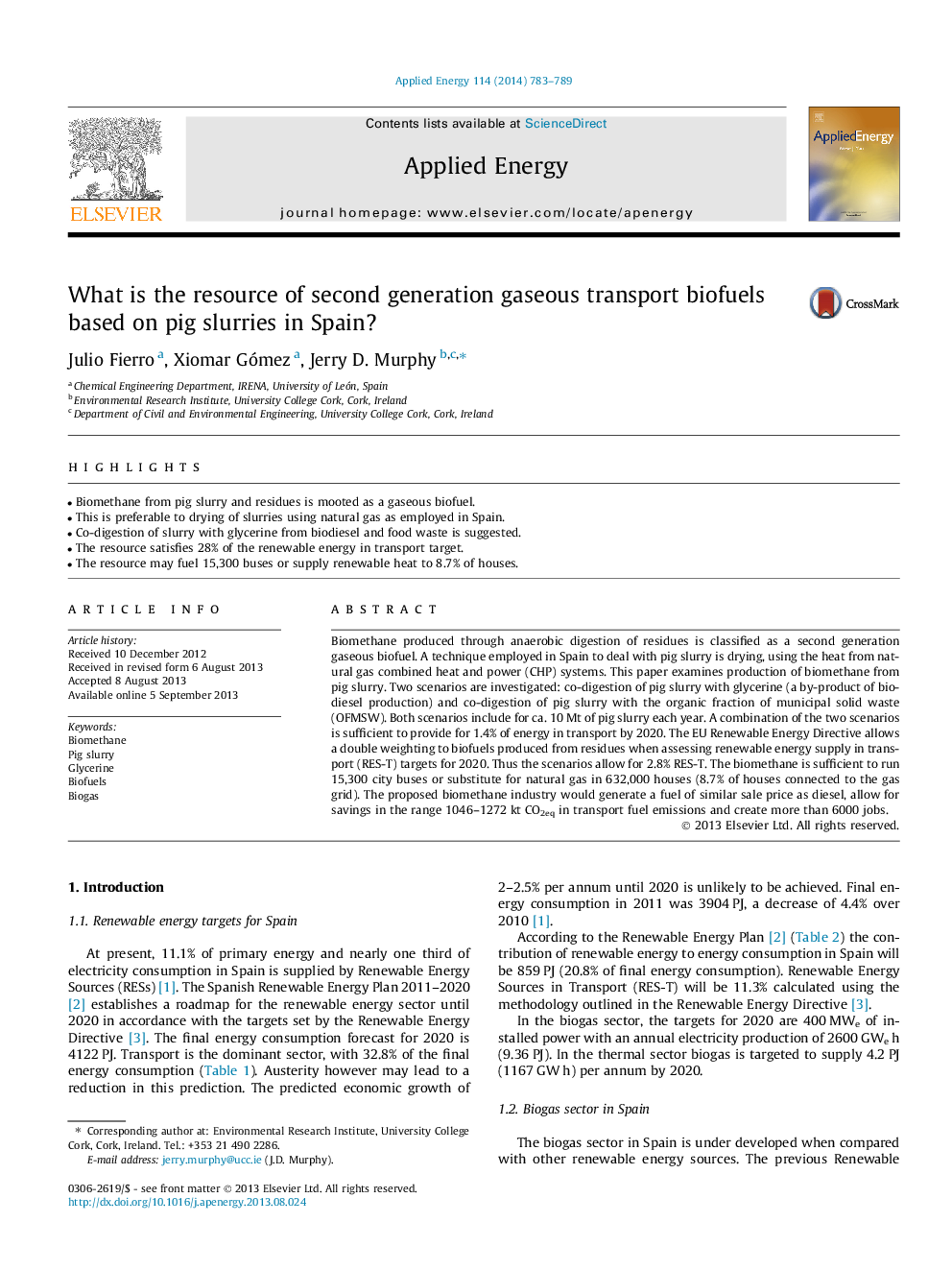| کد مقاله | کد نشریه | سال انتشار | مقاله انگلیسی | نسخه تمام متن |
|---|---|---|---|---|
| 6691771 | 501911 | 2014 | 7 صفحه PDF | دانلود رایگان |
عنوان انگلیسی مقاله ISI
What is the resource of second generation gaseous transport biofuels based on pig slurries in Spain?
ترجمه فارسی عنوان
منابع سوخت نسل دوم سوخت های حمل و نقل گازهای گلخانه ای براساس شلغم خوک در اسپانیا چیست؟
دانلود مقاله + سفارش ترجمه
دانلود مقاله ISI انگلیسی
رایگان برای ایرانیان
کلمات کلیدی
بیوماتین، دوغاب خوک، گلیسیرین، سوخت های زیستی، بیوگاز،
موضوعات مرتبط
مهندسی و علوم پایه
مهندسی انرژی
مهندسی انرژی و فناوری های برق
چکیده انگلیسی
Biomethane produced through anaerobic digestion of residues is classified as a second generation gaseous biofuel. A technique employed in Spain to deal with pig slurry is drying, using the heat from natural gas combined heat and power (CHP) systems. This paper examines production of biomethane from pig slurry. Two scenarios are investigated: co-digestion of pig slurry with glycerine (a by-product of biodiesel production) and co-digestion of pig slurry with the organic fraction of municipal solid waste (OFMSW). Both scenarios include for ca. 10Â Mt of pig slurry each year. A combination of the two scenarios is sufficient to provide for 1.4% of energy in transport by 2020. The EU Renewable Energy Directive allows a double weighting to biofuels produced from residues when assessing renewable energy supply in transport (RES-T) targets for 2020. Thus the scenarios allow for 2.8% RES-T. The biomethane is sufficient to run 15,300 city buses or substitute for natural gas in 632,000 houses (8.7% of houses connected to the gas grid). The proposed biomethane industry would generate a fuel of similar sale price as diesel, allow for savings in the range 1046-1272Â kt CO2eq in transport fuel emissions and create more than 6000 jobs.
ناشر
Database: Elsevier - ScienceDirect (ساینس دایرکت)
Journal: Applied Energy - Volume 114, February 2014, Pages 783-789
Journal: Applied Energy - Volume 114, February 2014, Pages 783-789
نویسندگان
Julio Fierro, Xiomar Gómez, Jerry D. Murphy,
